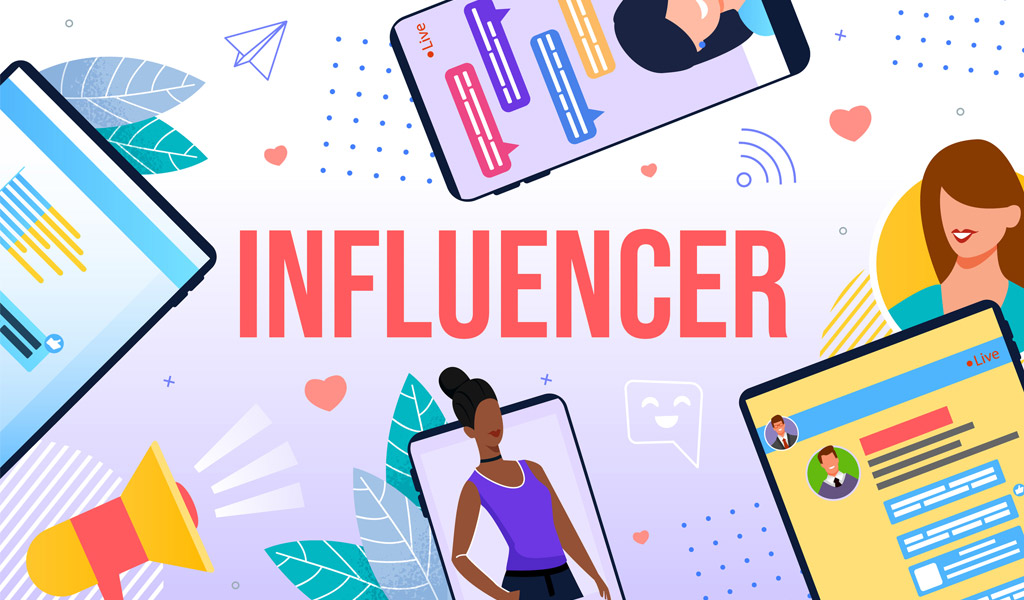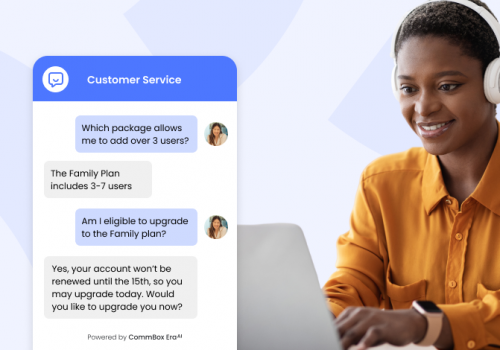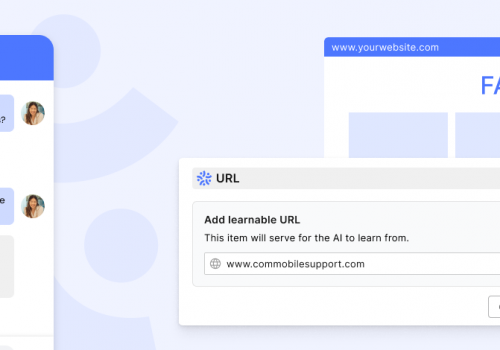Influencer Marketing. With around 65% of marketers saying they plan to increase their influencer marketing in the next year, it’s clear that this type of marketing is a major focus for businesses in the digital age. But what’s the right way to do influencer marketing? Here’s our definitive guide!
What Is Influencer Marketing?
Influencer marketing is a more indirect (but no less effective) way of reaching your target audience. With traditional marketing, the company will advertise straight to the target audience and hope that some of those people will feel compelled to buy the product or service. With influencer marketing, you identify the key leaders in your industry or niche and drive your message through them.
How Does Influencer Marketing Work?
Typically, the company will contact an influencer in their niche and pay the influencer to promote their product or brand. This has the effect of increasing product sales and also increasing brand awareness. It’s a form of both social proof, and word-of-mouth marketing.
Influencer marketing skyrocketed with the advent of social media and continues to get stronger every year as more and more people engage with social media platforms. On platforms like YouTube, influencer marketing usually takes the form of a sponsored message from the content creator. For example, a popular makeup channel might work with a company that sells makeup brushes or other cosmetic items. On Instagram, the content is more likely to take the form of an attractive photo of the influencer wearing the product with a catchy caption under the photo. If the influencer has an extremely popular blog, they might be asked to write (or share) a blog post about the product.
While most companies typically approach influencers, who operate within their niche, some companies are less specific about the influencers they work with. If you’ve spent much time on YouTube, then you’ve probably come across the same sponsorships over and over. Raid Shadow Legends, Audible, SkillShare, NordVPN, Dashlane, SquareSpace, and Brilliant come to mind. These companies will typically work with a broad range of influencers from almost any niche. They might work with makeup, true crime, education, book tube, or gaming content creators. Why? Because these companies want to reach a wide audience and typically have products that appeal to a lot of people. People who watch makeup videos might also want a secure internet browsing experience and like to listen to audiobooks, so why not approach them?
Does Influencer Marketing Actually Work?
Yes, put simply, it does. Mediakix’s 2019 Influencer Marketing Survey found that 80% of respondents said this type of marketing is effective for their company. Additionally, 71% of marketers said the quality of traffic they gained from influencer marketing was much better than other types of marketing.
In many ways, influencer marketing is like celebrity marketing we’ve been seeing for decades now. However, there’s one key difference – Influencer marketing is more effective. One study found that 70% of teens trust influencers more than traditional celebrities. There could be many reasons for this, for example:
Authority
Influencers tend to be an authority in a particular niche. When you see, for example, George Clooney advertising a car, you might think “Wow, he looks cool in that car”. But you don’t think “Wow, not only is he a skilled actor, but he’s also an expert on cars”. You don’t necessarily trust that George Clooney will know whether that is a good car or not. However, with a fitness influencer, you trust that they know which fitness products or services are effective, and you trust them to only promote safe, reputable, and effective products.
Intimacy
Amazingly, one study found that 4 in 10 millennials believe their favorite influencer understands them better than their friends do. Influencers manage to create personal and intimate relationships with their fan base in a way that celebrities or traditional marketing methods struggle to recreate.
Reliable and Accountable
Influencers are held accountable by their fans. Fans are the lifeblood of the influencer, and the influencer has a direct and open line of communication with these fans. If the influencer promotes a shady product, the fans will let them know their displeasure immediately and publicly. This means that influencers are often cautious and deliberate about the companies they work with, and this is better for customers and companies. Customers can have a higher degree of trust in the influencer and the products they promote, and the companies who work with the influencer know that their reputation won’t be harmed by other shady sponsorship deals the influencer takes on.
Why Does Influencer Marketing Work?
Influencer marketing works because the key leaders in your niche have already gained the trust of your target audience. For a company, it can take a long time and lots of brand awareness campaigns to build up trust with the target audience. For smaller or newer companies, the task can feel impossible at times. With influencer marketing, you don’t need to go out and build that trust yourself, the influencer is essentially doing it for you. Your target audience trusts the influencer’s opinion.

How to Do Influencer Marketing the Right Way in 2020
Finding the Right Influencer
It should come as no surprise that finding the right influencer is the first and crucial step on your influencer marketing journey. However, with over 500K influencers on Instagram alone, and countless more on other platforms, it can be difficult to know where to start. Following these helpful tips will get you started.
The Three Rs of Influence
Influence is made up of three components and by considering these components you can help identify the right influencers for your business.
- Relevance – Does the influencer share content that is relevant to your business or industry?
- Reach – How many followers does the influencer have? How many people can they potentially reach?
- Resonance – This is about engagement and is crucial! A big follower count doesn’t mean much if the audience isn’t engaged. Some people have a high follower count, but very little activity in terms of likes and comments on the content. This could mean that the influencer bought followers or just that they struggle to create content that connects (resonates) with their audience.
Who Is Your Target Audience?
It’s a great idea to create audience or buyer personas so you can drill down into specifics about who you are trying to reach. Once you do this, it becomes much easier to find an influencer who matches your target audience.
Look for Influencers with High Engagement
As we discussed in the “Three Rs” section, engagement is key. When the influencer has a high level of user engagement it means that users trust what they have to say. Since trust is the magic ingredient to successful influencer marketing, this should be a top priority for marketers.
Do Your Research
This might seem like an obvious one, after all, isn’t every other section already about doing research? Mostly, but the other sections are about specific qualities to look for, this is a more general (and not always positive) form of research. Here are some things you should look for:
The Look, Feel, and Tone of the Content or Influencer
You ideally want to pick an influencer that closely matches the look and feel of your company. If your company uses lots of bright and vibrant colors, then look for an influencer who does the same. It doesn’t have to be a perfect match, but your product should feel natural on the influencer’s profile, not out of place or jarring.
The Influencer’s Values
Remember, once you connect with an influencer, people will assume that your values match theirs. This is a great thing if the influencer promotes the same values as your company, and this is usually what you’re looking for, but it’s a good idea to do some extra research. Has the influencer ever been involved in a controversy that can bring negative attention to your company? Have they ever promoted values that don’t align with your values? You should look beyond their Instagram account to determine this.
As an example, Christian Influencer Jinger Vuolo has lost several partnerships because of values not promoted on her social media accounts. In the past, she has pledged her support to anti-LGBT sentiments, as well as other controversial stances. Some Instagram users are quick to point this out to the companies she works with, and the majority of the time the company will thank the user who brought it to their attention and cease to work with Jinger in the future. Put simply, if you don’t want to do damage control, then make the extra effort to ensure you don’t work with harmful influencers in the first place.

Look for Sponsorship Saturation
Be mindful of working with influencers who work with lots of companies. This could mean that your product gets lost in the sea of other posts about products from different (and sometimes competitor) companies.
Plan Your Approach and Budget Accordingly
If you want to go straight for a big influencer, then expect to pay them to create a post on your product. Depending on their reach and engagement, the costs can vary greatly. For an extreme example, Kylie Jenner is paid around $1.2 million for a single Instagram post. The cost is usually set by the influencer and there is often only a little room for negotiation.
Here are some things you should consider when deciding which platform and influencer to choose:
- Influencers on Facebook charge an average of $25 per post, per 1000 followers. This means that if they have 10,000 followers, you can expect to pay $250, and so on.
- Influencers on Instagram typically charge $10 per 1000 followers. Therefore, if the influencer has 10,000 followers, you can expect to pay $100.
- Some Instagram influencers instead use an engagement model. This is typically priced at $250 to $750 per 1000 engagements.
- Twitter is the cheapest platform at $2 per 1000 followers on average. Twitter is typically cheaper because it has a smaller audience than Facebook and Instagram, and tweets can be easily drowned out.
- On YouTube, you can expect to pay around $20 per video per 1000 subscribers. Some YouTubers charge per views, ranging from $50 to $100 for 1000 views.
- On Snapchat, you can expect to pay $10 per 1000 followers for a post.
- For a typical influencer blog, you can expect to pay $60 per 1000 visitors.
Other Tips for Influencer Marketing
- Take the extra time to write a personal message to each influencer, rather than one canned message. This can increase your chances of striking a deal with the influencer. Remember, they are just as wary as working with the right people as you are.
- Always disclose advertising or sponsored posts. Do this by using the hashtags #ad and #sponsored, but also include this in the post or video too.
- Allow the influencer to have some creative control. If you want to drive engagement, then allow the influencer to have some creative control over the post or message.















